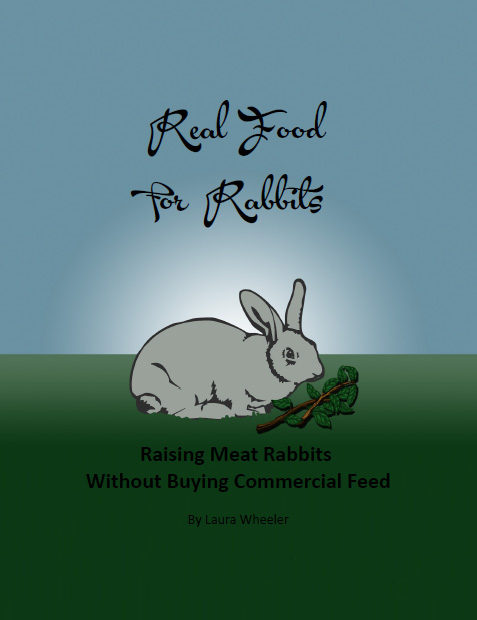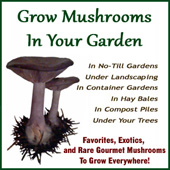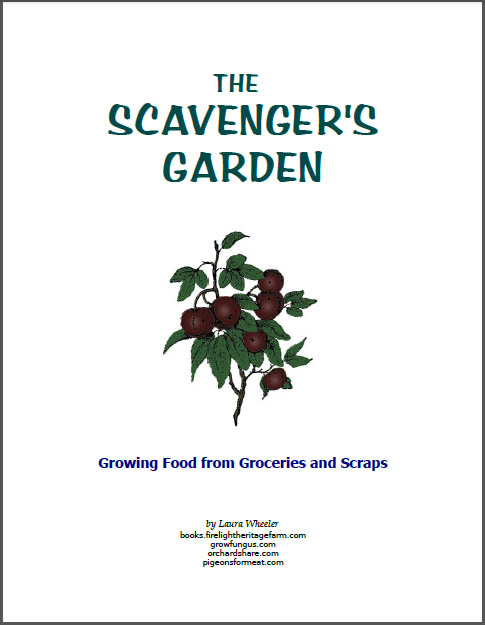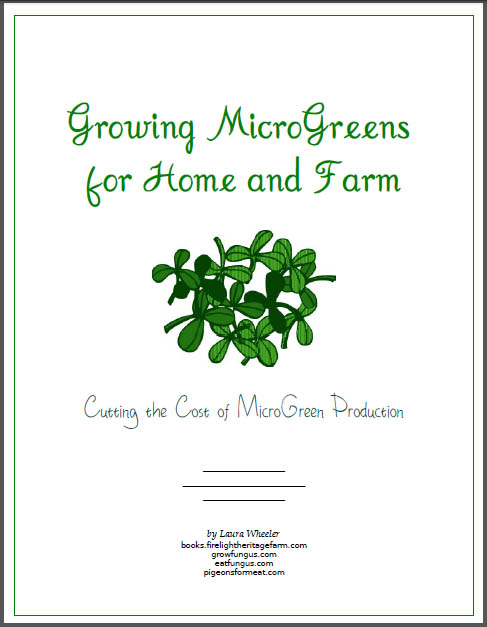 Click to Download Your Free Heritage Pickling and Culturing e-Book Now!
Click to Download Your Free Heritage Pickling and Culturing e-Book Now!
Instant Download, NO Registration Required!
Feeding Comfrey to Rabbits and Other Livestock
Comfrey has a reputation as an aggressive grower, and many people see it as potentially a valuable feed for livestock. It can be, but not in the same way hay is used.
Comfrey is a cellular growth stimulator, and it REALLY works. A natural side effect of that is that it can stimulate growth that you do not want. So for people, it is NOT recommended as a daily food or a daily application to the skin - for treating temporary issues only. It has a reputation for causing cancer, and it CAN do so, because if you use it repeatedly in the same location, it can stimulate abnormally rapid cellular growth, which can result in DNA mutations, and some of those mutations may be cancerous. This is how it works, folks, any herb which stimulates growth has the same potential side effect, because the side effect is the NATURAL result of growth stimulation.
Most animals live such a short life that the affects are not noticed, but it is not wise to give a large amount to them every day if they are your breeders and you need them for many years.
That said... rabbits process comfrey differently than people do. I've written a book on feeding rabbits entirely without commercial feed, and we've done this several times, so I'm coming at this from a place of experience, not just theory. Look in the sidebar of this site for an ad for Real Food For Rabbits.
There is a simple rule for feeding animals without commercial feed, and it is that you do NOT feed them large amounts of the same thing every day. You give them as wide a variety as you can, just as you do for yourself and your family. Many things that are listed as "not safe" for rabbits or chickens or whatever are ONLY a problem if you try to make the animal LIVE off that food. Avocado peels, potato peels, etc, are fine for both, if they are not their only food, and if they are given a little here and a little there, like they occur from normal kitchen scraps (not canning scraps!). :)
We typically limit comfrey to ONE nice sized leaf, per rabbit, every other day or so. One large leaf is a significant portion of their diet.
Comfrey will grow back if heavily picked, in 1-2 months, depending on your exact growing conditions. We have only two plants, and five rabbits, so they don't get much where we are now (we previously lived where comfrey was growing wild everywhere!).
Comfrey is considered to be an aggressive grower, and it really isn't. It is simply a PERSISTANT grower, and it does multiply, so your patch will expand over time.
I'd guess you'll need 1-2 plants per rabbit if you want to rely on it as a source of feed.
Our chickens won't eat comfrey very well if it is fresh. They do eat it dried and crumbled as a winter feed though - they like all kinds of greens dried and crumbled.
We do give our bunnies dried and crushed herbs and greens in the winter also, and they really go for that.
I find sunflowers to be a more valuable feed plant than comfrey, with comfrey having only a single advantage, and that is that it comes back every year without needing to be replanted. We pick the petals just before they start to shrivel, and dry them. We harvest the leaves as soon as the seed heads start to dry. And last, we harvest the seeds. Early in the spring, we yank out the thinnings and give those to the animals also. Every part of the plant is usable as animal feed, for rabbits, chickens, goats, cattle, etc. The leaves dry really well for winter storage.
There are many other plants as well that can be grown and used for valued livestock feed, and which may be used fresh, stored, or dried. Turnips (greens and bulbs), rutabaga, cabbage, pumpkin or other squash, sweet potato vine, carrots (and tops), raspberry vines, blackberry vines, strawberry runners and sets with leaves, fig leaves, grape vines and leaves, fruit trees (leaves, twigs, dried fruit peels, etc), dill and fennel, alyssum, dead nettle, chickweed, and much more.








